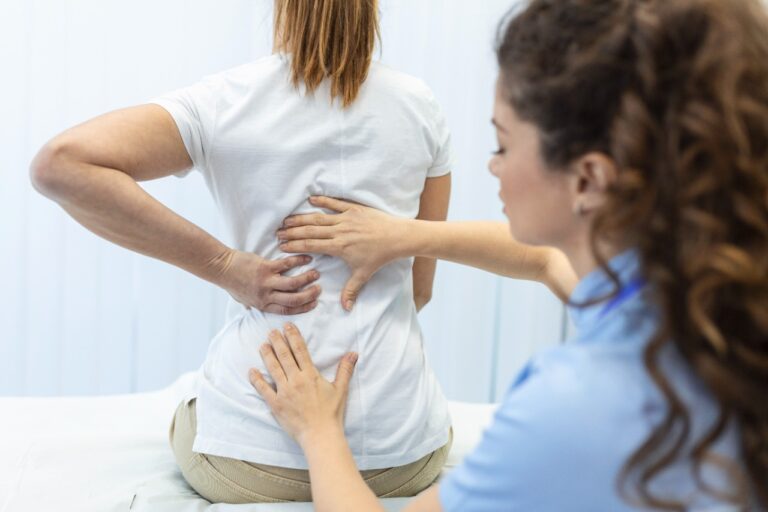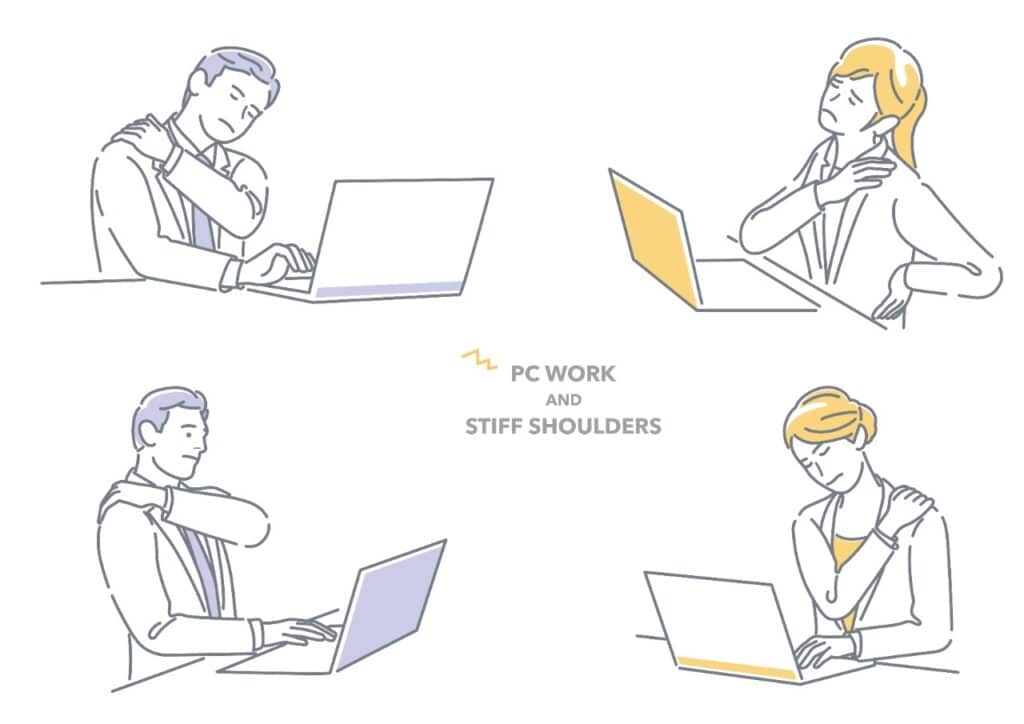Ankylosing Spondylitis Homeopathy Treatment
Regain Flexibility and Live Pain-Free with Expert Homeopathic Care
Ankylosing Spondylitis (AS) is a long-term inflammatory condition that mainly affects the spine and lower back. It can cause pain, stiffness, and reduced flexibility, especially in the morning or after long periods of rest. Over time, AS can lead to fusion of spinal bones, affecting posture and movement.
It most commonly appears in people aged 20-40 and is often linked to a gene called HLA-B27. While conventional treatments like painkillers, physiotherapy, and biologics help manage symptoms, many patients now explore homeopathy for safe, long-term support.
BEST HOMEOPATH DOCTOR
Awarded By Asian News
64,789+
Happy Patients

Why Choose Homeopathy for Ankylosing Spondylitis?
Homeopathy focuses on treating the root cause and improving overall immunity. It offers a gentle and side-effect-free approach that can help:
Reduce joint and back pain
Improve mobility and flexibility
Minimize stiffness and fatigue
Slow down disease progression
Boost general wellbeing
Unlike conventional medicine that often suppresses symptoms, homeopathy works to strengthen the body’s natural healing ability.
Symptoms of Ankylosing Spondylitis
The signs and symptoms may start showing as early as adulthood. This problem is more commonly found in men than women. Some of the initial symptoms that can surface are:
- There may be pain and stiffness in your lower back and hips, which is the earliest symptom.
- You may experience pain which is mainly severe in the morning after waking up or after sitting for a long time.
- Your spine may seem to be curving forward and rigid, which may allow the least flexibility.
- Tiredness is another common symptom for a person suffering from spondylitis.
- Your joints may swell, making it difficult to move smoothly without pain.
- Some patients may even complain about breathing issues.
- There can be redness in the eye, which is painful, and vision may be blurred or severely sensitive to light.

If left untreated, AS can cause permanent spinal fusion and disability. This is where Ankylosing Spondylitis Homeopathy Treatment becomes a game-changer.
Why Choose Dr. Tathed’s Homeopathy Ankylosing Spondylitis Treatment
30+ Years of Clinical Experience in treating chronic autoimmune diseases
Specialization in Rheumatological Cases like AS and rheumatoid arthritis
Individualized Remedies based on in-depth case-taking and symptom profiling
Evidence-based Protocols approved and refined through long-term practice
Thousands of Patient Success Stories shared in our clinic and through verified testimonials
Clinic Featured in Renowned Health Media and community health awareness initiatives
Our team is trained in both classical and modern homeopathy and stays updated with international research to bring the most effective, ethical, and customized care.
Commonly Used Homeopathy Medicines For Ankylosing Spondylitis
Here are some commonly used remedies. Note: Actual prescription varies by patient:
Kali Carb is recommended when the back is painfully weak and stiff. The urge to lie down and a sensation of paralyzing weakness are both present. The patient finds it difficult to walk and must sit down. The patient’s back may feel extremely painful and stiff. Additionally, the patient might experience backbone fractures.
Aesculus is administered when the patient complains of severe stiffness and pain in the lumbosacral region of the back. As the pain gradually spreads to the thighs, walking becomes challenging. Pain can be dull or sharp, tearing or aching, or it can be so intense that it can feel like your back is broken.
Bryonia is prescribed to patients who experience excruciating back pain that gets worse when they move or when they walk. Standing, bending over, and sitting can all make some patients’ backaches worse. The patient won’t experience relief from the back pain until after a thorough nap.
When there is stiffness in the neck region, cimicifuga is administered. The patient’s neck is overly stiff and in excruciating pain. Retracted neck muscles are felt. In particular, during the winter, cold air makes neck stiffness worse. The patient experiences lumbosacral pain that travels to their hips and thighs.
This is recommended when a patient experiences hip pain that can be cramping, tearing, or squeezing in nature. In a few instances, this hip pain may radiate down to the knee, leg, or even the feet. In many cases, the affected hip is also sensitive to touch.
* Note – Above medicines are for knowledge purpose only. Take the medication only after doctor’s consultation. Do not self medicate
What the Research Says
- A 2024 systematic review on rheumatic diseases reported that individualized homeopathy showed beneficial outcomes in conditions like AS, with minimal side effects.
- A 2015 case report published in Thieme Journals highlighted significant improvement in AS symptoms with Rhus toxicodendron and constitutional remedies.
- Global systematic reviews suggest that homeopathy may improve quality of life and reduce dependency on painkillers when used as a complementary therapy.
Lifestyle & Diet Support
- Daily gentle stretching exercises (e.g., yoga, pilates)
- Anti-inflammatory diet (low starch, rich in omega-3 and antioxidants)
- Stress management (mindfulness, breathing exercises)
- Good hydration and quality sleep
We offer holistic guidance with every treatment plan to ensure faster recovery and relapse prevention.
Is Homeopathy Right for You?
If you’re suffering from Ankylosing Spondylitis and want a holistic, side-effect-free, and long-term healing approach, homeopathy may be the right choice. Especially if you:
Are tired of taking painkillers daily
Want to avoid or delay biologic injections
Are looking for a safe alternative for long-term use
Real Case Studies: Ankylosing Spondylitis Relief Through Homeopathy
Patient Name: Mr. Ajay Sharma
Age: 34
Complaints: Lower back pain, early morning stiffness, fatigue, HLA-B27 positive
Diagnosis: Early-stage Ankylosing Spondylitis
1st Follow-up (1 Month): Slight improvement in stiffness; pain reduced from 8/10 to 6/10.
2nd Follow-up (3 Months): Marked improvement in flexibility; stiffness duration reduced by 50%.
3rd Follow-up (6 Months): CRP levels normalized; patient resumed morning walks and light yoga.
Outcome: 75% overall improvement; no dependency on painkillers.
Patient Name: Mr. Ramesh Deshmukh
Age: 41
Complaints: Severe back stiffness, shoulder pain, disturbed sleep, fatigue, unable to stand straight in mornings
Diagnosis: Moderate AS with thoracic spine involvement
1st Follow-up (1 Month): Sleep improved; reduction in pain intensity.
2nd Follow-up (3 Months): Posture correction noticeable; morning stiffness now lasts 15 minutes instead of 1 hour.
3rd Follow-up (5 Months): Able to walk 2 km daily without discomfort.
Outcome: 65–70% improvement; biologics avoided.
Patient Name: Mr. Rohit Mehta
Age: 28
Complaints: Pain in lower back and hips, especially after rest, disturbed bowel movements, stiffness lasting 2 hours
Diagnosis: Early axial spondyloarthritis
1st Follow-up (1 Month): Bowel habits improved; reduction in pain while sitting.
2nd Follow-up (2.5 Months): Less fatigue, improved sitting tolerance, less use of heat pads.
3rd Follow-up (4 Months): Flexibility improved; physiotherapist noted better spinal mobility.
Outcome: 60% better symptom control; AS no longer affecting daily routine.
Patient Name: Mr. Manish Kulkarni
Age: 37
Complaints: Stiff neck and back, restricted movement, pain worse in cold weather, history of uveitis
Diagnosis: Ankylosing Spondylitis with extra-articular symptoms
1st Follow-up (1.5 Months): Pain better by 30%, uveitis flare prevented during season change.
2nd Follow-up (3 Months): Posture improved; more comfortable with day-to-day work.
3rd Follow-up (6 Months): Eye symptoms remained in remission; AS symptoms under better control.
Outcome: 70% symptomatic relief; inflammation and relapses significantly reduced.
Patient Name: Mr. Saurabh Jain
Age: 45
Complaints: Back pain, inability to bend, chronic fatigue, fear of surgery
Diagnosis: Advanced AS with spinal fusion signs on X-ray
1st Follow-up (1 Month): Pain reduced slightly; energy level improved.
2nd Follow-up (3 Months): Able to bend partially; walking improved.
3rd Follow-up (6 Months): Progress slowed due to advanced damage but reported better quality of life and less dependence on steroids.
Outcome: 50% improvement in function and stamina; emotional well-being significantly better.